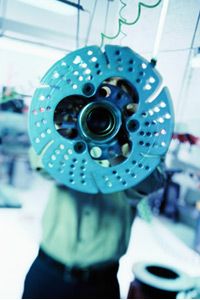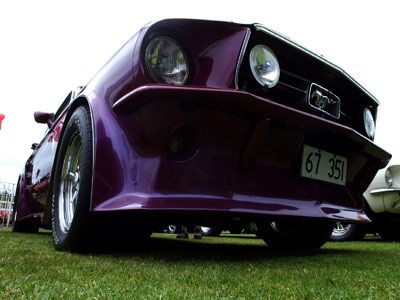Making your ride stop better is hardly the coolest way to soup it up. But whether you're a tuner-car enthusiast looking to make your WRX drift-ready or an average Joe looking to tweak the safety and performance of your beloved '68 F-150, a disc brake conversion is actually the first modification you should consider.
There are many good reasons to ditch your old-fashioned drum brakes for discs. Drum brakes can be troublesome; they're easily damaged by heat, moisture and debris, they offer less-than-optimal stopping power, and they often need regular adjustment.
Advertisement
The obvious candidates for disc brake conversions are pre-1970 vehicles, since disc brakes didn't become standard until the '70s. Chrysler introduced standard disc brakes in the 1950s, but this innovation didn't catch on until the mid-1960s, when power brake systems, which made disc brakes easier to operate, hit the market. But even most modern cars and trucks still come standard with drums on rear wheels. Rear drums have stuck around mostly because they're cheaper than disc brakes, and since a car's front brakes do 70 percent of the work, rear brake performance can be sacrificed for cost. [Source: Professional Mechanics Online]
In this article, we'll look at the basics of brake conversion, including the tools you'll need to do the job yourself, the difference between front and rear conversions, and the kits available to save yourself a trip to the junkyard.
If you know your calipers from your spindles, you probably have the expertise to do the brake conversion yourself. But do you have all the tools you need? Read on to find out.
Advertisement

